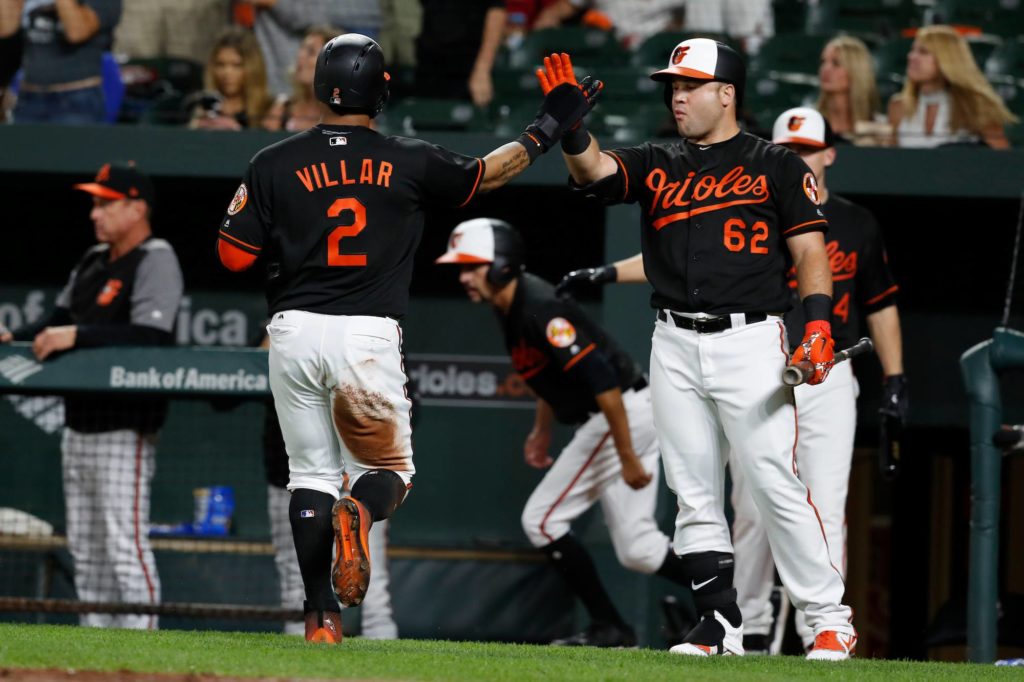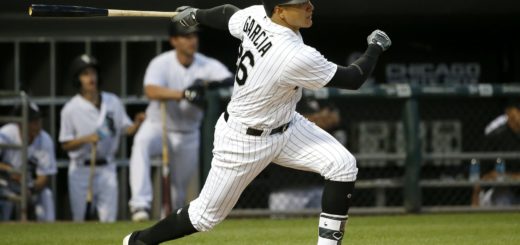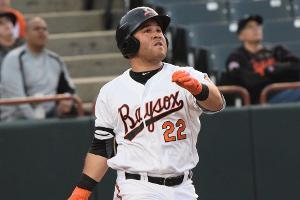Examining the leadoff hitter
A prototypical leadoff hitter is usually a batter that can see a maximum amount of pitches and reach base safely. He’s quick-footed, can hurry cross-diamond throws and can steal second base, leaving himself in scoring position. Typically, your leadoff batter should have one of the highest on-base percentages across the team.
Mookie Betts of the Boston Red Sox (.438), Brandon Nimmo of the New York Mets (.404) and Lorenzo Cain of the Milwaukee Brewers (.395) were each in the top ten in on-base percentage throughout the majors. And of the 11 players that stole 30 or more bases last season, six of them were their teams respective leadoff batter.
In comparison, the Baltimore Orioles finished dead last in on-base percentage in the American League (.298). The team’s season leader was Manny Machado (.387) and he only played 96 games before being traded. On the current roster, Mark Trumbo (.313), Trey Mancini (.299) and believe it or not, Chris Davis (.243) led qualifiers last season. The Orioles missed finishing last overall in the majors by one percentage point. The San Diego Padres were the worst, finishing the season with a .297 on-base percentage.
None of the players mentioned are going to be leadoff hitters. We’ve been down the path of Davis leading off. Simply put, it didn’t work and quite frankly, didn’t make sense.
So with Spring Training in sight, who should the Orioles start to consider as their leadoff hitter for 2019?
Cedric Mullins
Cedric Mullins appeared in his first major league game on August 10 last season. In a 19-12 loss to the Red Sox, he made his presence felt immediately by going 3-for-4, with two doubles. Although just by reading this you’d think by the number of at-bats, Mullins was at the top of the lineup. Remember though, there were 31 total runs scored that night. Mullins hit ninth.
Since being called up from Triple-A Norfolk, Mullins has hit elsewhere in the lineup just eight times. Batting fourth, seventh, eighth or ninth, Mullins has a batting average of .429 (9-for-21) in 26 plate appearances. His on-base percentage outside of the leadoff spot is a staggering .520. It’s a small sample size to work with, but it’s worth mentioning.
And it’s worth mentioning because his numbers at the top of the lineup weren’t overly impressive. In 165 plate appearances as leadoff batter last season, Mullins produced a .208 batting average (31-for-149). He did hit four home runs and drove in nine runs, however, his .280 on-base percentage is not what you’d like to see out of your number one spot.
Manager Brandon Hyde said at FanFest over the weekend, “bottom line is I want my best three hitters in the top three spots. I want them to get as many at-bats over the course of the year as we possibly can.”
I’d be interested to see what Mullins can do over the course of a full season in the leadoff spot. Last season he averaged just over four pitcher per at-bat (4.03), with the league average being 3.90. Nine percent of his at-bats ended with a base-on-balls, but 19% of them ended with a punch out.
Jonathan Villar
If you’re playing the experience card, Jonathan Villar wins hands down. This will be his seventh year in the majors and he’s had modest numbers over his career in the leadoff spot.
Splitting time with the Houston Astros, the Brewers and the Orioles, Villar has hit from the leadoff spot in 259 games – with 255 starts. Over 1,170 plate appearances, he’s hit to a .266/.338/.411 slash line with a .749 on-base plus slugging percentage. He does have 30 home runs at the top of the lineup and has a 79% stolen base rate (99-for-126).

Last season, after being acquired from the Brewers on July 31, he appeared in his first game as an Oriole on August 2. Leading off in Arlington against the Texas Rangers, Villar went 2-for-5 and scored against former Orioles starter Yovani Gallardo. Throughout the season, Villar led off in 20 games. Over 94 plate appearances, he hit .286 (24-for-84) with a .344 on-base percentage and one home run.
Villar becomes a better player when setting the tone of the inning – or game. The majority of his at-bats came from the sixth spot in the lineup, but he only slashed .187/.259/.301 there in 135 appearances. He also hit second a bunch last season. Former manager Buck Showalter shuffled the lineups enough, but batting second, he hit .202 (20-for-99), struck out 32 times and walked just 11.
The argument can be made that his strikeout-to-walk ratio was just over 3-to-1, but he put up a higher on-base percentage than any other player to hit leadoff last season.
The Orioles just don’t have many other options to choose from. Rule-5 pick Richie Martin could be a name tossed around during Spring Training. Last season with Double-A Midland, he hit from the leadoff spot in 17 games, batting .368 with an on-base percentage of .419. He’ll be on the 25-man roster. That’s how the Rule-5 draft works, so keep your eye on him.
Jace Peterson isn’t on the 40-man roster but he was invited to Spring Training. He has leadoff experience over his four seasons in the majors. Last year in 12 games batting leadoff – nine starts – he hit .143 (5-for-35) with a double and a home run. Peterson has hit leadoff 484 times over his career and turns in a .328 on-base percentage in 423 official at-bats.






